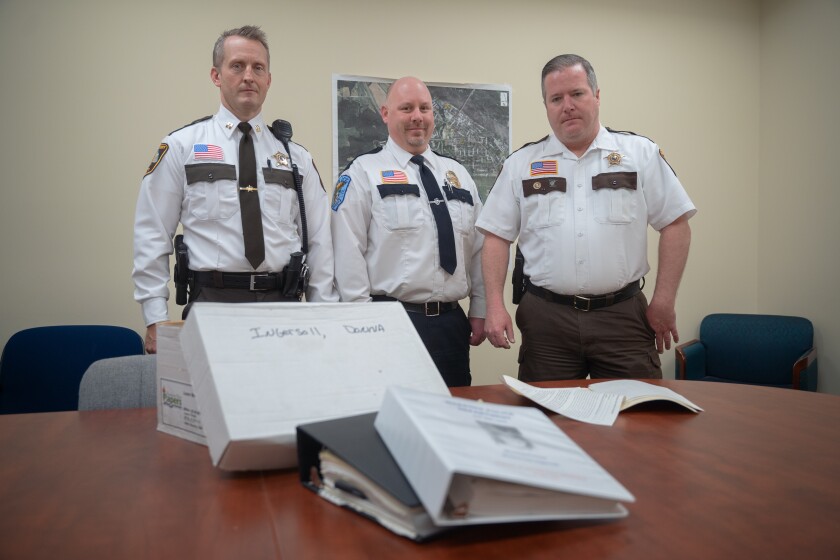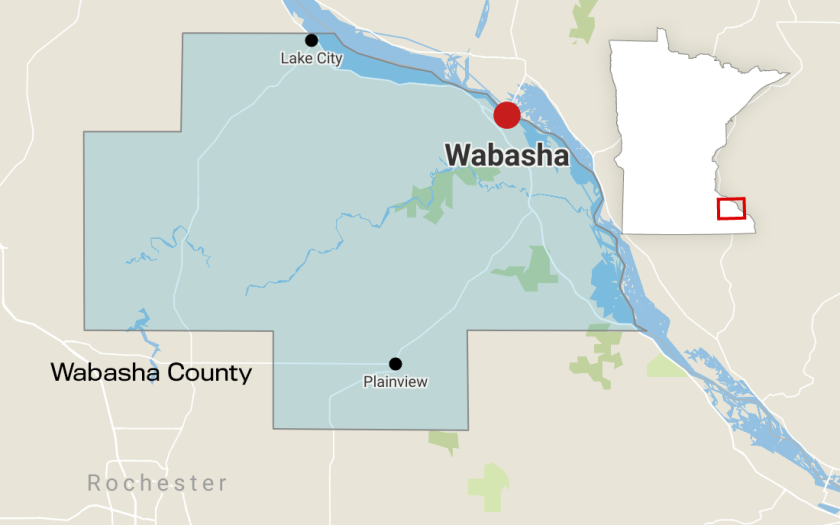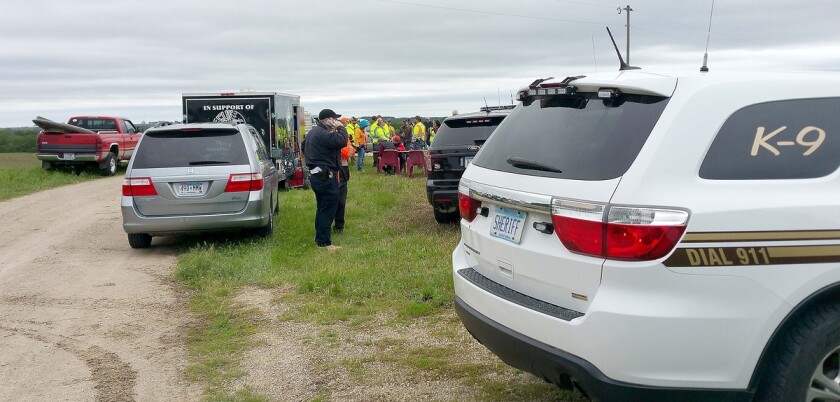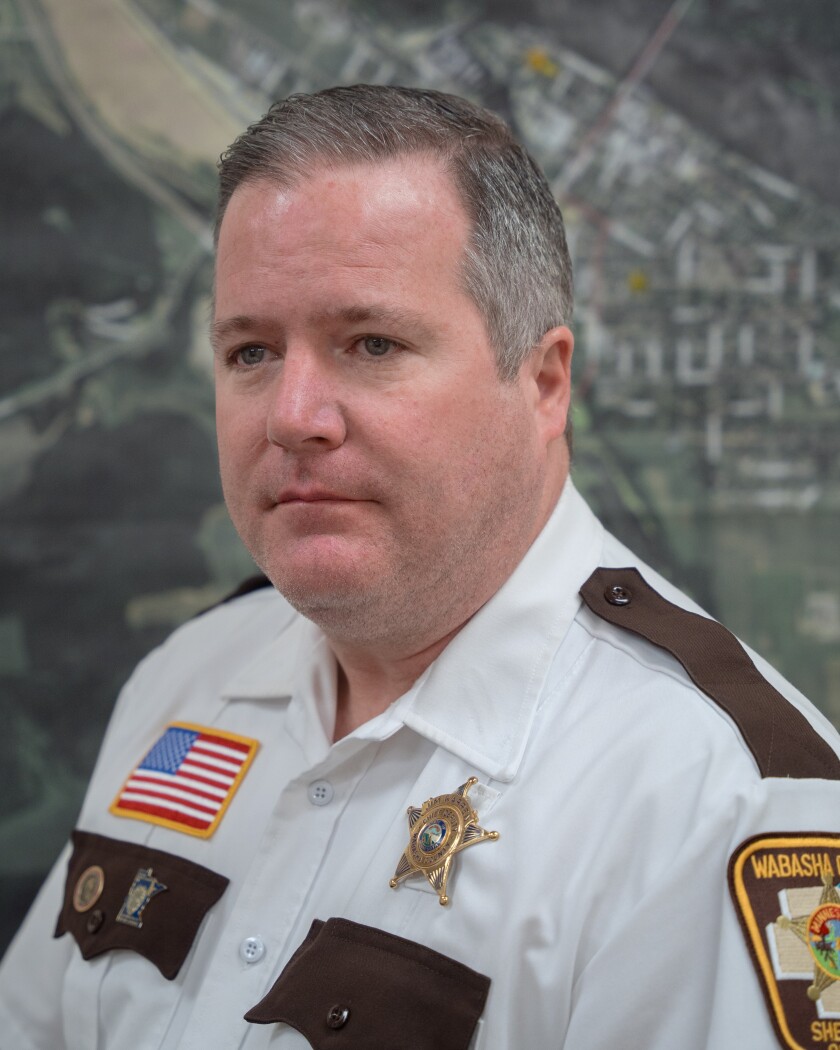Editor's note: This archival Vault article was first published in March 2022. There are no known updates in the case. If you have information on this case, contact the MN BCA Tip Line at 877-996-6222.
WABASHA, Minn. — The grim details surrounding the disappearance of Donna Ingersoll are straight forward and depressingly familiar to anyone who has followed the case over the decades.
ADVERTISEMENT
Thirty two years ago, on a frigid December night, Ingersoll, then 25, walked out the back door of a Wabasha private residence and was never seen again.
One might assume her case file is moldering in a dusty cabinet somewhere.
But it’s not. So say Wabasha law enforcement leaders.
In an interview with Wabasha County Chief Deputy Jim Warren and Wabasha Police Chief Joe Stark, both made clear that Ingersoll’s case has never completely fallen off their radar, though there have been periods of investigative silence. Remarkably, given the passage of time, they also speak of possibly solving the case with the right alignment of the investigative stars.
During an hour-and-half interview, Warren used phrases like "Hail Mary" and "needle in haystack" to describe the odds of breaking the case. But at other times, he described how the intermittent investigative work over the years has brought them to a place where one confession could lift the veil on what happened to Ingersoll.
“In my heart of hearts, we wouldn’t be where we are today if we didn’t work on it,” Warren said.
Indeed, they say they know that there are people alive today with critical knowledge and information about the case. And the reason that her disappearance remains wrapped in an impenetrable mystery is their reluctance, three decades later, to tell what they know.
ADVERTISEMENT

They also revealed for the first time that they have been exploring a different scenario of how she disappeared.
One possibility: Instead of leaving the residence on that cold night and disappearing into thin air, investigators suspect that whatever happened to Ingersoll happened inside the residence. An urgent injury of some kind or something worse.

To protect the investigation, Warren declined to explain further what more they believe could have happened inside the residence that night. But he says the investigation has yielded information, “so we know that there was some physical argument inside the residence.” Previous news reports say that the argument was with her boyfriend, Gary Murphy, of Plainview, Minnesota.
Another piece of evidence that calls into question the idea of her rushing out the back door into the arctic night is her jacket. The eyewitness accounts were inconsistent on that score. Some said she was wearing one, others said she wasn't. But her jacket, purse and glasses were later recovered by law enforcement, meaning that if she did impulsively run out into the night, she left without them.
"A lot of things happened that night," Warren said. "I doubt that she could have ever left the house."
Including Ingersoll, there were five people inside the residence on the night of her mysterious disappearance: Her boyfriend and two friends and the two friends’ child. Warren describes the gathering as a social get-together.
Murphy committed suicide the next summer, according to website Websleuths. Murphy was never been ruled out as suspect in her disappearance, and his death suggested the possibility of psychological torment.
ADVERTISEMENT
Except for Murphy and Ingersoll, who is presumed dead, the others remain alive, although one has health issues.
Both law enforcement officials said that they know of people, outside of those who were in the residence that night, who have valuable information that could advance the case, if not solve it.
Neither said what information these material witnesses might have or how they came to possess it. But they said these witnesses' hesitancy in telling what they know was rooted in fear of what might happen if they did talk. Warren described these witnesses as more than one and that they’ve talked to investigators as recently as 2018.
“We always knew that they have information, but they're just, ‘I’m not talking,” Warren said. “And then, over the years, people change and they mature and they get their own family.”
"What came through in the interview," Stark said, "is that they ... it became pretty obvious that they were holding back something that they were uncomfortable saying, that they were still uncomfortable saying."
Warren said “core samples” were taken from the residence during a search.
The story of the investigation into Ingersoll’s disappearance is contained in a 150-page, three-ring binder. The binder is a condensed version of a large box of investigative materials and documents that sits inside Warren’s office and that he sees every day when he arrives at work. It’s a near-daily reminder of unfinished business.
ADVERTISEMENT
Warren said he has read the report nearly a dozen times over the years, and every time he does, something leaps out at him that he didn’t notice before.

Ingersoll is described as a small woman, only four feet nine inches tall with bleached blond hair and green eyes. But her small stature was belied by a tough, independent personality who wasn’t afraid to stand up for herself. She also served a stint in the military.
Why does the case have such a hold on Wabasha investigators? It’s not exactly unheard of for people to disappear. According to the National Missing and Unidentified Persons database, more than 600,000 persons go missing every year, and approximately 4,400 unidentified bodies are recovered every year.
But in this small southeastern community of 2,600 people, however, such sudden, unexplained disappearances are practically non-existent. Neither Stark nor Warren could think of a similar case in the last half-century. The incident stands out all the more starkly because it’s the only one people can remember. That is partly why — in addition to wanting to bring closure to the family — that the case has never been allowed to fade into oblivion.
“We’re a small-knit community,” Stark said. “It’s not a common thing to happen. It’s just something that never leaves the mind.”
Over the years, the case into her disappearance has ebbed and flowed.

One such spurt of activity was about 10 years ago, when Warren formed a cold case review board that brought in more people and expertise to review the case. That included a representative from the Minnesota Bureau of Criminal Apprehension.
ADVERTISEMENT
It also allowed Warren to pull in non-sworn private citizens onto the board, including Miranda Klees and Heidi Johnson. Klees works as an admin assistant for the Lake City Police Department and Johnson for the Wabasha Police Department. Klees has stayed in touch with Ingersoll’s four sisters over the years.

In 2015, Wabasha law enforcement organized a community-wide search for Ingersoll’s body. The plan was for cadaver dogs, ground-penetrating radar and kayak patrols to search the area for clues that might shed light on her disappearance or find her remains.
The publicity surrounding the search prompted a farmer to call with a tip that he remembered finding a skull on his property 15 years ago. That last-minute revelation caused investigators to shift their focus away from the methodical search planned for that weekend. In the end, it proved a distraction rather than a break in the case.
The Ingersoll investigation is ramping up again, perhaps with a sense that time might be running out.
“We need this out in the public,” Warren said. “Refresh the public’s opinion on, ‘hey, these guys are still working on it.’”
If you have information on this case, contact the MN BCA Tip Line at 877-996-6222.





























